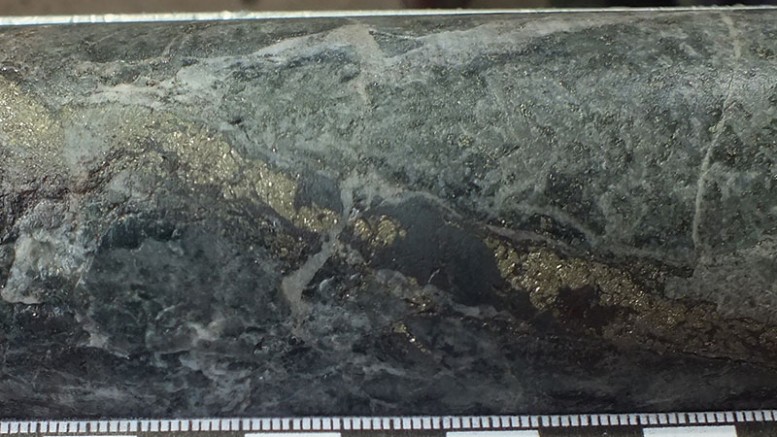VANCOUVER — Mid-tier base metals producer Lundin Mining (TSX: LUN; US-OTC: LUNMF) has been hungry for copper over the past two years, and it hopes to be picking up a future copper mine with its US$262-million deal for Freeport-McMoran’s (TSX: FCX) stake in the high-grade Timok copper discovery in eastern Serbia.
The companies have long-standing partnerships in Europe and at the large Tenke copper mine in the Democratic Republic of the Congo, where Freeport is majority owner and operator.
It is the second deal between the two over the past two years, with Lundin picking up the Candelaria copper mine in Chile from Freeport for $674 million in late 2014.
Under the purchase agreement, Lundin would acquire a 55% interest in the Upper Zone of the Cukaru Peki deposit, as well as Freeport’s interest in all the mineral licences comprising the 232 sq. km Timok project. Cukaru Peki is a high-grade, copper-gold epithermal deposit overlying what could be large, porphyry-style mineralization.
And that’s where things get complicated. Freeport optioned the Timok concessions from project generator Reservoir Minerals (TSXV: RMC), and the junior still has a 45% stake in the project. Lundin would inherit Freeport’s right to boost its stake to 75% via delivery of a feasibility study, but Reservoir also holds a right of first offer that could torpedo the deal.
In addition, Freeport has a 54% interest in the Cukaru Peki Lower Zone, which hosts deep porphyry-style mineralization that is likely more amendable to block-cave, bulk-tonnage mining. Assuming the deal closes Lundin will have the right to 75% of the Upper Zone, with Reservoir having a 25% interest. Meanwhile, Freeport has assured it will retain a 54% interest in the Lower Zone, with Lundin and Reservoir holding 21% and 25%.
The payment schedule isn’t any simpler. Lundin will pay Freeport US$135 million upon closing, with another US$20 million due in exploration and study work on the Lower Zone. After a construction decision Lundin will pay US$45 million, with another US$50 million due upon commercial production and up to US$12.5 million owed in recouped project expenses.
“We’re really excited about Timok, and we’ve followed the asset since 2013,” Lundin president and CEO Paul Conibear said during a conference call.
“We had our initial discussions with Freeport a long time ago, and assuming the deal closes, it will enhance our long-term growth pipeline, while preserving a strong balance sheet. It’s high-grade copper-gold and it overlies a potential tier-one lower zone porphyry. I see no need for us to do any further acquisitions in the medium-term,” he added.
Freeport and Reservoir released a maiden resource for Cukaru Peki in 2014, which totals 65.3 million tonnes of 2.6% copper and 1.5 grams gold per tonne.
The estimate includes the high-grade massive sulphide domain containing an estimated 6.8 million tonnes at 9.6% copper and 5.9 grams gold at a 1% copper equivalent cut-off grade, and “a significant proportion” of the semi-massive sulphide domain, containing 14 million tonnes of 3.2% copper and 2.7 grams gold at a 3% copper equivalent cut-off.
The Timok asset package may seem early stage — and much of it is greenfield — but Freeport and Reservoir have hinted that a preliminary economic assessment at Cukaru Peki could arrive this year. The companies reported a 2015 exploration budget of US$18.7 million at the target, and Conibear said there were 12 drills turning during his visit to the property in December.
Another wrinkle in the deal is Freeport’s back-in rights if another “large mineral discovery” is made on the property. Assuming a deposit in excess of 4 million tonnes of copper equivalent, Lundin would revert to a 21% interest on the discovery.
Reservoir’s right of first offer could alter the plans, however, as it grants the junior an opportunity to bid for Timok’s majority rights within 60 days. It’s unlikely that Reservoir can put together an offer on its own — though the company does have US$30 million in its treasury — but it recently signed an earn-in and joint-venture agreement on four wholly owned exploration permits in the Timok region with Rio Tinto (NYSE: RIO).
Under the deal Rio would spend US$3.1 million in Serbia by November 2017, and earn 75% in Reservoir’s Nikolicevo, Kraljevica, Coka Kupjatra and Tilva-Njagra concessions by sole funding US$75 million in project expenses.
So Lundin’s conference call on March 7 was in many ways both an information session and a sales pitch.
“Assuming Reservoir welcomes us into the project, which we hope they do, we’ll complete the transaction quickly and get people on the ground,” Conibear said. “This really flushes out both the medium-term and long-term pipeline for Lundin in terms of copper … we own a stake in the Tenke operation, but we aren’t an operator there and we don’t control the development stages. Our intention is to get a perfectly sized, high-grade copper operation going within five years, and Timok is ideal. This would be our marquee, highest-priority investment moving forward.”
Lundin finished 2015 with a US$550 million in cash. The company’s shares have traded between $2.98 to $6.46 over the past year, and closed at $4.43 per share at press time. Lundin has 720 million shares outstanding for a $3.3-billion market capitalization.
Canaccord Genuity has a “buy” recommendation on Lundin along with a $4.50 price target. Analyst Peter Bures says Reservoir probably won’t exercise its right of first offer, and adds that the acquisition shows Lundin’s “balance sheet strength,” and could add “long-life, high-grade copper-gold production within the next decade.”


Be the first to comment on "Lundin Mining takes a US$262M shot at Freeport’s stake in Cukaru Peki"